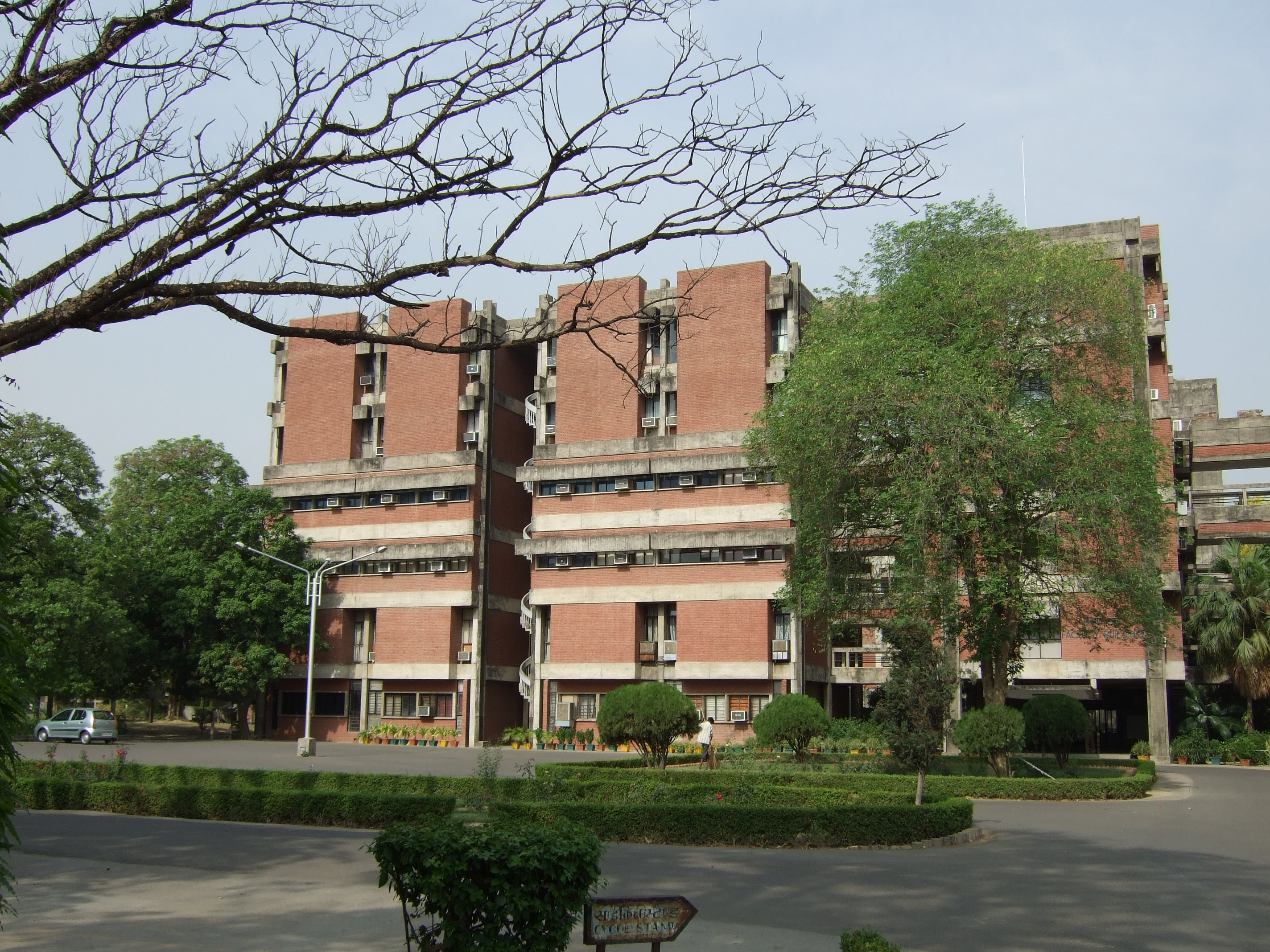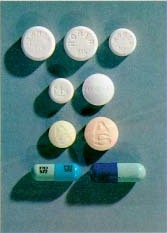|
Syed Husain Zaheer
Syed Husain Zaheer was an Indian chemist, politician and the director general of the Council of Scientific and Industrial Research (CSIR), the largest research and development organisation in India. Prior to taking up the directorship of CSIR, He served as the director of the Indian Institute of Chemical Technology, a division of CSIR, where he established the department of Biochemistry. After his superannuation from CSIR, he chaired the Board of Governors of the Indian Institute of Technology, Kanpur. The Government of India awarded him the third highest civilian honour of the Padma Bhushan, in 1972, for his contributions to science. In 1951, along with Indra Kishore Kacker, he was the first to synthesize Methaqualone Methaqualone is a hypnotic sedative. It was sold under the brand names Quaalude ( ) and Sopor among others, which contained 300 mg of methaqualone, and sold as a combination drug under the brand name Mandrax, which contained 250 mg met .... Refer ... [...More Info...] [...Related Items...] OR: [Wikipedia] [Google] [Baidu] |
Padma Bhushan
The Padma Bhushan is the third-highest civilian award in the Republic of India, preceded by the Bharat Ratna and the Padma Vibhushan and followed by the Padma Shri. Instituted on 2 January 1954, the award is given for "distinguished service of a high order...without distinction of race, occupation, position or sex." The award criteria include "service in any field including service rendered by Government servants" including doctors and scientists, but exclude those working with the public sector undertakings. , the award has been bestowed on 1270 individuals, including twenty-four posthumous and ninety-seven non-citizen recipients. The Padma Awards Committee is constituted every year by the Prime Minister of India and the recommendations for the award are submitted between 1 May and 15 September. The recommendations are received from all the state and the union territory governments, as well as from Ministries of the Government of India, Bharat Ratna and Padma Vibhushan a ... [...More Info...] [...Related Items...] OR: [Wikipedia] [Google] [Baidu] |
Council Of Scientific And Industrial Research
The Council of Scientific and Industrial Research (IAST: ''vaigyanik tathā audyogik anusandhāna pariṣada''), abbreviated as CSIR, was established by the Government of India in September 1942 as an autonomous body that has emerged as the largest research and development organisation in India. CSIR is also among the world's largest publicly funded R&D organisation which is pioneering sustained contribution to S&T human resource development in the country. , it runs 37 laboratories/institutes, 39 outreach centres, 3 Innovation Centres and 5 units throughout the nation, with a collective staff of over 14,000, including a total of 4,600 scientists and 8,000 technical and support personnel. Although it is mainly funded by the Ministry of Science and Technology, it operates as an autonomous body through the Societies Registration Act, 1860. The research and development activities of CSIR include aerospace engineering, structural engineering, ocean sciences, life sciences and he ... [...More Info...] [...Related Items...] OR: [Wikipedia] [Google] [Baidu] |
Research And Development
Research and development (R&D or R+D), known in Europe as research and technological development (RTD), is the set of innovative activities undertaken by corporations or governments in developing new services or products, and improving existing ones. Research and development constitutes the first stage of development of a potential new service or the production process. R&D activities differ from institution to institution, with two primary models of an R&D department either staffed by engineers and tasked with directly developing new products, or staffed with industrial scientists and tasked with applied research in scientific or technological fields, which may facilitate future product development. R&D differs from the vast majority of corporate activities in that it is not intended to yield immediate profit, and generally carries greater risk and an uncertain return on investment. However R&D is crucial for acquiring larger shares of the market through the marketisation ... [...More Info...] [...Related Items...] OR: [Wikipedia] [Google] [Baidu] |
Indian Institute Of Chemical Technology
The CSIR-Indian Institute of Chemical Technology is a national-level research center located in Hyderabad, Telangana, India under the Council of Scientific and Industrial Research (CSIR). IICT conducts research in basic and applied chemistry, biochemistry, bioinformatics, chemical engineering and provides science and technology inputs to the industrial and economic development of the country. IICT has filed one of the maximum CSIR patents. Activities The research and development programmes of IICT relate to the development of technologies for pesticides, drugs, organic intermediates, fine chemicals, catalysts, polymers, organic coatings, use of low-grade coals, and value-added products from vegetable oils. Process design and mechanical engineering design form an integral part of technology development and transfer. IICT is also actively engaged in basic research in organic synthesis and catalyses. Public health An example of the institute's work is development of technology fo ... [...More Info...] [...Related Items...] OR: [Wikipedia] [Google] [Baidu] |
Indian Institute Of Technology, Kanpur
The Indian Institute of Technology Kanpur (IIT Kanpur) Hindi: भारतीय प्रौद्योगिकी संस्थान कानपुर) is a public institute of technology located in Kanpur, Uttar Pradesh, India. It was declared to be an Institute of National Importance by the Government of India under the Institutes of Technology Act. The institution was established in 1959. As one of the first Indian Institutes of Technology, the institute was created with the assistance of a consortium of nine US research universities as part of the Kanpur Indo-American Programme (KIAP). History IIT Kanpur was established by an Act of Parliament in 1960 by the Government of India. The institute was started in December 1959 in a room in the canteen building of the Harcourt Butler Technological Institute at Agricultural Gardens in Kanpur. In 1963, the institute moved to its present location, on the Grand Trunk Road near Kalyanpur locality in Kanpur district. The camp ... [...More Info...] [...Related Items...] OR: [Wikipedia] [Google] [Baidu] |
Methaqualone
Methaqualone is a hypnotic sedative. It was sold under the brand names Quaalude ( ) and Sopor among others, which contained 300 mg of methaqualone, and sold as a combination drug under the brand name Mandrax, which contained 250 mg methaqualone and 25 mg diphenhydramine within the same tablet, mostly in Europe. Commercial production of methaqualone was halted in the mid-1980s due to widespread abuse and addictiveness. It is a member of the quinazolinone class. The sedative–hypnotic activity of methaqualone was first noted in 1955. In 1962, methaqualone was patented in the United States by Wallace and Tiernan. Its use peaked in the early 1970s for the treatment of insomnia, and as a sedative and muscle relaxant. Methaqualone became increasingly popular as a recreational drug and club drug in the late 1960s and 1970s, known variously as "ludes" or "disco biscuits" due to its widespread use during the popularity of disco in the 1970s, or "sopers" (also "soaps") ... [...More Info...] [...Related Items...] OR: [Wikipedia] [Google] [Baidu] |
IIT Kanpur People
The Indian Institutes of Technology (IITs) are central government owned public technical institutes located across India. They are under the ownership of the Ministry of Education of the Government of India. They are governed by the Institutes of Technology Act, 1961, declaring them as Institutes of National Importance and laying down their powers, duties, and framework for governance as the country's premier institutions in the field of technology. The act currently lists twenty-three IITs. Each IIT has autonomy and is linked to others through a common council called the IIT Council, which oversees their administration. The Minister of Education of India is the ex officio Chairperson of the IIT Council. List of institutes History The history of the IIT system nearly dates back to 1946 when Sir Jogendra Singh of the Viceroy's Executive Council set up a committee whose task was to consider the creation of ''Higher Technical Institutions'' for post-war industrial ... [...More Info...] [...Related Items...] OR: [Wikipedia] [Google] [Baidu] |
Year Of Birth Missing
A year or annus is the orbital period of a planetary body, for example, the Earth, moving in its orbit around the Sun. Due to the Earth's axial tilt, the course of a year sees the passing of the seasons, marked by change in weather, the hours of daylight, and, consequently, vegetation and soil fertility. In temperate and subpolar regions around the planet, four seasons are generally recognized: spring, summer, autumn and winter. In tropical and subtropical regions, several geographical sectors do not present defined seasons; but in the seasonal tropics, the annual wet and dry seasons are recognized and tracked. A calendar year is an approximation of the number of days of the Earth's orbital period, as counted in a given calendar. The Gregorian calendar, or modern calendar, presents its calendar year to be either a common year of 365 days or a leap year of 366 days, as do the Julian calendars. For the Gregorian calendar, the average length of the calendar year (the mea ... [...More Info...] [...Related Items...] OR: [Wikipedia] [Google] [Baidu] |




